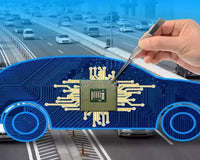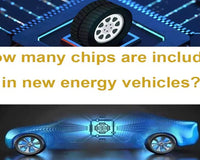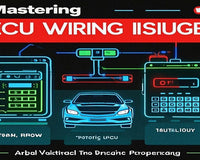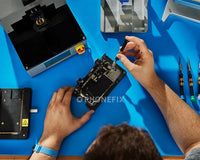Flickering headlights can be both irritating and potentially dangerous for drivers. Flickering lights can distract other drivers and significantly impair a driver's ability to see the road ahead, especially at night or in poor weather conditions. potentially leading to confusion or misjudgment about the vehicle's intentions. This can increase the risk of accidents due to decreased visibility.
Understanding the causes of headlight flickering and the associated dangers is crucial for maintaining vehicle safety and ensuring a safe driving experience.
6 Possible Causes for Headlight Flickering.
1. Dying or Faulty Battery.
A weak or failing battery is one of the most common reasons for flickering headlights. If the battery cannot provide a steady flow of power, the headlights may flicker or dim, especially when the engine is idling or under load. If the battery is old or weak, replacing it can often resolve flickering issues. Using GC305H Power Supply Regulator testing the battery's voltage can help determine its condition.
2. Loose or Corroded Connections.
Loose or corroded battery terminals and connections can interrupt the flow of electricity, causing the headlights to flicker. Regularly checking and cleaning these connections can help prevent this issue. Regularly check battery terminals and electrical connections for corrosion or looseness. Cleaning and tightening these connections can prevent flickering.
3. Worn-Out Bulbs.
Over time, the filament in headlight bulbs can degrade, leading to flickering or dimming. Replacing old or worn-out bulbs can resolve this problem. If the headlight bulbs are old or flickering, replacing them with new ones can solve the problem.
4. Failing Alternator.
The alternator is responsible for charging the battery and powering the electrical systems when the engine is running. If the alternator is malfunctioning, it may not supply enough voltage, leading to flickering lights. The voltage output of the car’s electrical system can be measured using a multimeter when the engine is running and when it is not. Variations in voltage or a noticeably low voltage measurement may be a symptom of problems with the alternator, battery, or wiring.
5. Faulty Wiring.
Damaged or frayed wiring can disrupt the electrical flow to the headlights. Inspecting the wiring for any visible damage and repairing or replacing it as necessary can help fix flickering issues. Inspect the wiring for any signs of damage.
6. Bad Headlight Switch.
A malfunctioning headlight switch can also cause flickering. If the switch is worn out or damaged, it may not maintain a consistent connection, leading to flickering lights. If the switch is faulty, replacing it can help maintain a consistent connection and eliminate flickering.
By addressing these potential causes and implementing the appropriate solutions, you can effectively resolve headlight flickering issues and ensure safe driving conditions.
Consult an experienced mechanic or automotive specialist if the troubleshooting techniques above don’t work, or if you need more confidence, you can do the troubleshooting yourself. A professional diagnostic tool may be required for scanning to identify the precise reason why the headlights are flickering and carry out the necessary repairs. Regular maintenance and timely inspections can help prevent these problems and ensure your headlights function properly.
Why do car headlights keep flashing?










